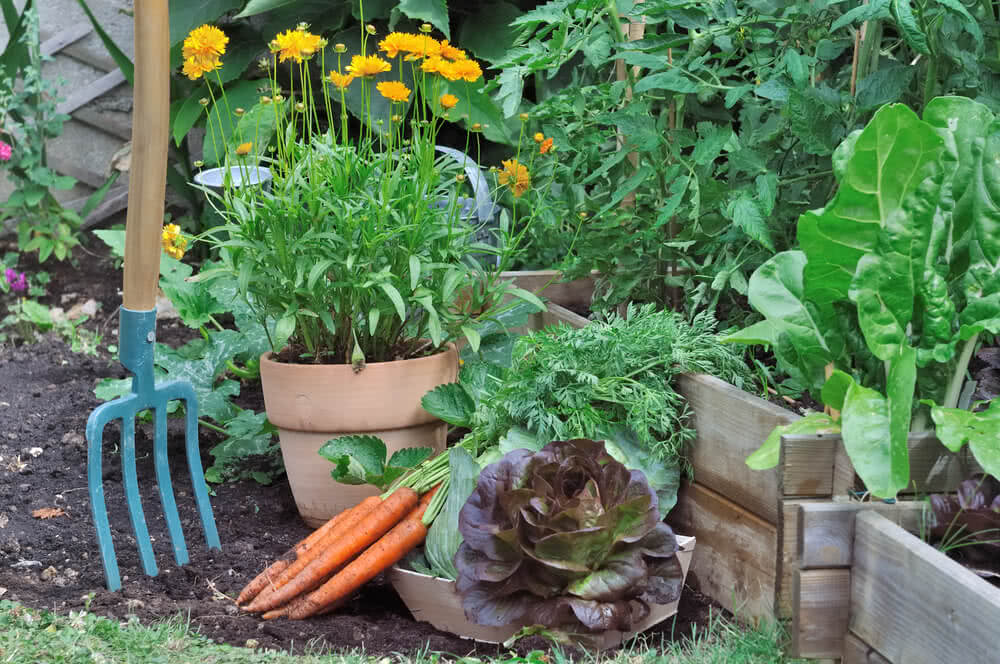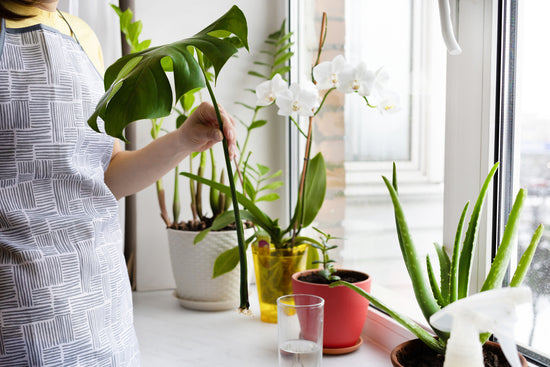Protector plants directly or indirectly save your vegetable crops like Chilli, Tomato, Brinjal, Lady finger, Gourds, Cucumber, Cabbage, etc. from pests and insects in many different ways. These plants can be planted among primary vegetable plants or within the same farmland.

Let's have a look at some of the easy to grow protector plants:
1. Marigold:
Marigold plant keeps mealy bugs away from main crops and controls the spread of harmful nematodes.
Marigold attracts honey bees and friendly insects that are major pollinators of the main crops. We all know how beautiful marigold flowers are. Growing marigolds by direct seed sowing are easy. Grow marigold plants all along the vegetable garden as an inter crop.
Read more about Why Do You Need Marigolds in Your Garden?

2. Pigeon pea:
Pigeon pea plant is a favorite resting place of friendly insects and natural predators of insect pests. Pigeon pea can be grown as a guarding hedge plant for a kitchen garden.
It is an important leguminous crop for its ‘Toor dal.' It can be grown as a perennial by seed sowing on the edges of farmland.

3. Pearl millet (Bajra):
The flowering inflorescence of Bajra is home to friendly fungus Trichoderma. Trichoderma protects the plant from pathogenic fungi. Plus many birds give visit to Bajra cobs for its grains, at the same times these birds also feast on harmful insect pests.
Bajra is a popular and very healthy cereal in India. There should be a separate patch made in a kitchen garden for growing this tall grass. Seeds can be directly sown in beds.

4. Carrot:
The carrot flowers attract numerous pollinators of vegetable crops. Grow carrot as an intercrop and let the plant reach flowering stage. This can significantly increase the overall yield of fruiting vegetables in the garden.
Carrot seeds can be sown in trenches along the vegetable beds, in the months of monsoon and winter. As a protector plant, carrot should be allowed to grow flowers and not harvested early for its roots.

5. Mustard:
Mustard is an excellent trap crop. The mustard plant attracts the insect pests that would have otherwise attack main vegetable crops of the garden.
Mustard is one of the easiest and fastest plants to grow by seed sowing. There should be a separate patch of protector mustard little bit away from the main vegetable garden.

6. Corn:
Corn cobs in farmland attract many predatory birds and insects. In the process creatures also get rid of harmful caterpillars from the vegetable garden.
Corn can be planted all over the kitchen garden in rows and borders. As a protector plant, we need to spare some tasty corns for birds and enjoy the ones left for us by nature.
Read more about Growing Corn in Your Garden!

7. Fennel:
Just like Mustard, Fennel flowers also attract the harmful insects in farmland and keep them away from other vegetable crops. Insect pests are lured towards fennel flowers and distracted from main fruiting and leafy vegetables.
Fennel is a popular kitchen herb grown for its leaves and fruits. A patch of fennel can be grown in a corner of a kitchen garden alongside the herb garden. As a protector plant, one must let the plant reach its flowering stage.

This way by growing protector plants you can minimize the use of pesticides and insecticides in your kitchen garden.
Lets Ugaoo!












